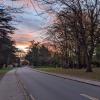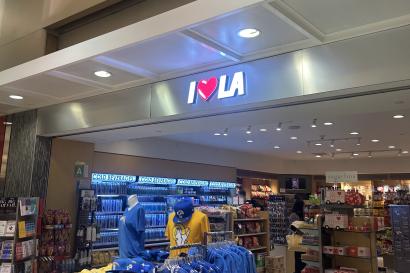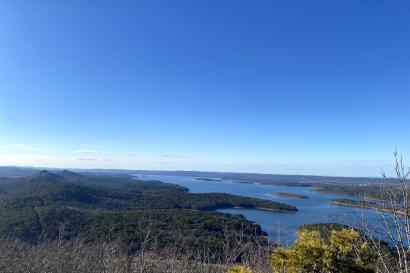
I grew up in a mountainous area called the Black Hills, at an elevation a little over 5,300 ft. Those mountains are a granite-y, pine tree-d gem in the rolling Midwest prairie, and I have them to thank for inspiring my first tramps and my interest in the outdoors. I will always consider them my beautiful home, but after seeing the mountains in New Zealand, I’m not sure I can still call the Black Hills “mountains”. Maybe their name says it all; compared to other mountain ranges in the world, even with the Black Hills’ steep cliffs, towering granite spires, chilly lakes and thinner air, they are more like hills. (I know a lot of Black Hills people read this, so please forgive me if you disagree. :) )
Since coming to Aotearoa, I have wanted to get out there, into the mountains. While an overnight stay in Arthur's Pass (the nearest access to the closest mountain range, the Southern Alps) was amazing, it only made me want to do a multi-night trip even more. Our three week mid-semester break in April seemed like the perfect time to do it. I knew I wanted to hike a Great Walk in the south of the South Island since the weather gets bad there first, making it unlikely I would be able to tramp there later in the winter. Great Walks are eleven tracks around NZ that are known for having some of the best and most iconic NZ scenery, as well as more easy/moderate difficulty. Since this would be my first multi-night backpacking trip, I wanted to start with a well formed, relatively busy, easy access track, especially since I was also going alone. A Great Walk fulfilled this criteria as well. I did bring a safety beacon in case of an emergency, but it was comforting to know that on a Great Walk I would never be totally alone in super rough terrain.
Less than a week before I left, I was very lucky to be able to book three nights on the Kepler Track Great Walk. Three things to know about booking Great Walks:
- If you want to stay in a hut (which is required in some very rainy areas, and in general a lot more comfortable) you need to make a reservation, which is different from non-Great Walks, where hut space is typically first come, first serve.
- The bookings fill up quickly and sometimes months in advance, especially on more popular Great Walks. However, cancellations are common, making it possible to snag a space if you keep an eye on the website.
- Bookings are expensive for international visitors. Expect to pay ~$100 NZD per night in a hut, and ~$30 NZD per night for a campsite. For reference, hut spots are usually $15 NZD on other tracks. However, the Great Walk huts are more expensive due to popularity and because of their very fancy amenities (by backpacking standards). For example, on the Kepler track, all the huts had *flushing toilets*-- truly a luxury
So yes, I was very glad to be able to get a hut spot. Unfortunately, the second night I had to book a campsite instead, since the nearby hut was full. I was not thrilled about having to lug a heavy tent around just for one night of camping, and my concern grew when the forecast predicted my tent night would also be the most rainy and windy. Anticipating a night of tenting in a cold, muddy campsite with the only distraction being fighting off the Kea birds that would surely enjoy chewing a hole in my tent, I kept a close eye on the hut booking website. Amazingly, at 6:00 P.M. the night before I left, two spots opened up in the hut, and I quickly reserved one. The other one was gone within 10 minutes. It was with great joy that I left my tent behind and stayed in huts all three nights on the track.
The Kepler Track itself is located in Fiordlands National Park, a huge preserve in the southwest of the South Island that also contains the famous Milford Track Great Walk. The area is known for its fjords, astoundingly blue lakes, rugged and tussocked alpine beauty, and moss carpeted beech forests. The track is a loop of 60 km (37 miles), although I only did about ~45 km (27 miles) of it by opting to take a water taxi to the beginning and a shuttle from the end. By doing this I cut off a flat section around the shore of the lake. This felt a bit like cheating, but when I reached the shuttle at the end my body was very grateful to not be walking another 15 km. There are oodles of other blogs and websites that chronicle the Kepler track in a blow by blow fashion, so I’ll just cover my personal highlights from each day.
Day 1 (~14.2 km, 8.8 miles):
- Four seasons in one day: When I arrived in Te Anau, the main town at the beginning of the Kepler Track, the sun was shining. However, when I checked in at the visitor center, the ranger told me they were considering closing the track the next day due to a forecast of heavy rain and wind gusts up to 105 km/h (65 mph). They wouldn’t call it until early the next morning though, so I just had to go for it and see what the ranger said at the first hut. I sincerely hoped I wouldn’t have to turn around and come back after only one night on the trail.
- This is why you always pack a paddle in your boat: From Te Anau, I took a water taxi (a boat) across Lake Te Anau to Brod Bay, where I could join the Kepler track. The boat ride usually takes about 5 minutes tops, but after only a few minutes, our boat driver (Greg) stopped the boat and said “no worries team, just want to check something real quick” and proceeded to open up a hatch near the engine and peer inside. This was an instance where “no worries” meant we should probably worry. Sure enough, something was wrong with the fuel intake, meaning the engine couldn’t get enough gas to keep going. Poor Greg was not prepared for this, and despite his efforts and the help of two other passengers who just happened to be a mechanic and an electrical engineer, the engine wouldn’t go. Thankfully they were able to get the auxiliary emergency engine to work…for about 30 seconds until that went kaput as well. So there we were, floating in the dead middle of the lake. At this point, me and the last two other passengers (a nice couple from Perth who were also starting the Kepler) were beginning to look at each other with concern. Time was passing, and we wanted to make it to the first hut (Luxmore Hut) well before sunset. After attempting the engine a few more times, Greg finally called his boss, who luckily had a spare jet boat. After about 15 minutes, his boss arrived with the boat, towed us back to shore, then took me and the Perth couple across to our original destination. I had expected some bumps in the road, but it seemed like these hiccups were happening ominously early in my journey.
- 360° of VIEWS: Based on a suggestion from Greg after he heard about the weather forecast, I decided to drop my bag off at the hut and then continue hiking past it to the summit of Mt Luxmore, the highest point on the trail. That way I could see the views before it all clouded in the next day. Coming out of Greg’s mouth, the idea of hiking “only” an additional hour to the summit seemed straightforward enough, but what he didn’t mention was that that section is one of the steepest parts of the track. However, without my heavy pack weighing me down (I only brought my emergency gear and some water), I felt like an agile little mountain goat and made good time to the summit and back. Even though it added two hours and about four more miles onto my hike that day, I was glad I did it. From the summit, I could see everything from the dark blue expanse of Lake Te Anau to the entirety of the tiny town and the plains beyond it to the mountains stretching into the distance, some of their summits shrouded in puffy clouds. Occasionally beams of “god light” would shoot down through the clouds, illuminating patches of the lake and the alpine landscape like a spotlight. My adventure to the summit was completed with a wonderful view of some Kea, squawking and calling to each other as they soared through the air before finding a rocky perch near the summit.
- The famous cheeky Kea: Keas are alpine parrots, and some of the most intelligent birds in the world. Part of their intelligence is expressed through extreme curiosity and a penchant for chewing on things, which often results in them completely destroying and/or carrying off the gear of unwitting backpackers. They will even swoop down and snatch food from your hand if you’re not careful. Their mischievous behavior has resulted in many colorful words being used to describe Kea, but the most ubiquitous one is “cheeky”. (I even took a shuttle with a company called The Cheeky Kea.) “Cheeky” is a very Kiwi word used to express mischievousness or naughtiness, but with a connotation of amusement.
At the first hut I stayed in, the local Kea had made their presence known by breaking the solar panels and pulling out the fiberglass they contained, and they were working on tearing out the rubber lining of the hut windows. And their party did not stop at sundown. The roof of the hut was metal, and all night we had the pleasure of listening to the sound of Kea feet scrambling up and down it right above our heads. They also did not bother to observe the quiet hours of the hut, loudly and proudly calling to their friends at all hours of the night. As I lay awake in my sleeping bag I came up with this list of things that Kea calls can sound like:
- Screeching monkeys
- A small rodent being trod on
- The laughter of mischievous little elves
- The opening of a rusty-hinged barn door
- A squeaky toy being repeatedly trod on
Needless to say, between the Keas and the snorers, not everyone got a good night’s sleep, and not everyone was as amused by the Kea’s nighttime antics as I was. I’ll always have a soft spot for them, and admire them for their intelligence, personality and unique traits. And if you’re wondering what a group of Keas is called? Naturally, it’s a circus.
Stay tuned for Part 2 of this post, where I’ll cover the highlights of the last three days.
Cheers!







Anna Marie Riner
Kia ora! My name is Anna Marie, and I am a creative, outdoorsy individual from the Black Hills in South Dakota. This semester, I'm excited to be crossing the globe to New Zealand for some studying, tramping (hiking), eating, birding, interning, exploring and much more.















